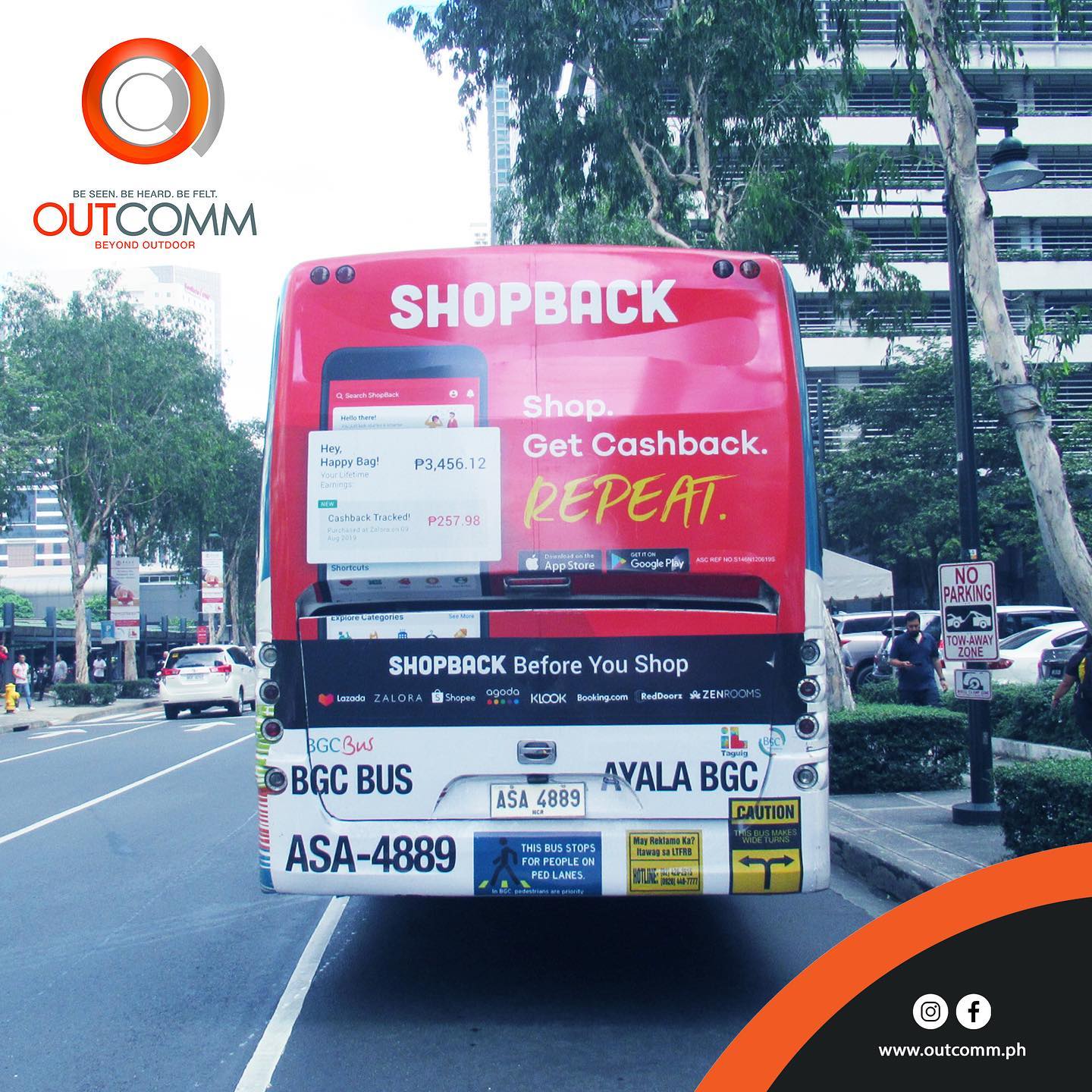Make Best Use Of Exposure with Transit Advertising Philippines
Make Best Use Of Exposure with Transit Advertising Philippines
Blog Article
How Transit Marketing Can Transform Public Transport Spaces Into Dynamic Advertising Platforms
Transit marketing holds considerable possibility to redefine public transport spaces right into vivid advertising and marketing platforms that inform and involve. By making use of ingenious layouts such as digital screens and interactive stands, brand names can not only reach a varied audience but additionally enhance the total traveler experience. This technique develops an unique possibility for brand names to get in touch with customers in a setup that is commonly ignored. As we discover the diverse benefits and advancing approaches of transportation advertising, it elevates the inquiry of how this improvement might redefine our interactions with both brand names and the city environment.
Benefits of Transportation Marketing

Additionally, transit advertising and marketing is highly cost-effective contrasted to traditional media. It allows marketers to attain high perceptions at reduced prices, making the most of return on investment. The captive audience of commuters provides a possibility for brand names to share their messages to people that are typically receptive during their traveling times.
Furthermore, the vibrant nature of transit marketing enables projects to be updated regularly, guaranteeing that messaging remains timely and appropriate. This adaptability can be vital in replying to market patterns or advertising occasions, maintaining the brand name top-of-mind for consumers. Lastly, the prevalent presence of transit marketing adds to brand recall; duplicated exposure within acquainted traveling contexts enhances brand name awareness and cultivates consumer loyalty, inevitably enhancing and driving sales brand name online reputation.
Types of Transit Marketing
Public transport systems offer numerous formats for advertising and marketing, each catering to different marketing strategies and target market involvement techniques. One popular type is external bus and train covers, which cover the whole automobile and create a mobile signboard effect, enabling high presence in city atmospheres. These wraps can record attention as they go across hectic streets, getting to a diverse audience.
Another preferred format is indoor advertising and marketing, that includes posters, digital displays, and ads on transportation seats. These positionings involve passengers throughout their journey, reinforcing brand name messaging in a constrained room. Digital presents, in specific, use the benefit of vibrant web content, enabling advertisers to upgrade messages in real-time.
Terminal advertising is additionally substantial, including posters, banners, and interactive booths within transit stations. These ads take advantage of foot web traffic and can target details demographics based upon location.
Last but not least, marketing partnerships with transit authorities can lead to unique campaigns, such as themed transportation experiences or occasions, boosting the total involvement with commuters. Each kind of transit marketing supplies distinctive advantages, permitting brand names to tailor their strategy to successfully reach their target market within the general public transport community.
Engaging Travelers Properly
Commuters are progressively swamped with marketing messages throughout their day-to-day trips, making it crucial for brand names to engage them in ingenious means. To record attention in this crowded room, advertisers have to prioritize creative thinking and importance. Making use of attractive visuals and concise messaging can dramatically enhance the likelihood of involvement.
Interactive elements, such as QR codes or increased fact attributes, can likewise transform static ads right into immersive experiences, promoting a much deeper connection with the audience. Brand names should concentrate on dealing with commuters' needs and rate of interests, customizing messages to resonate with their lifestyle, whether via promotions for neighborhood companies or solutions made to boost their travelling experience.
Additionally, timing plays a vital function; tactically placing advertisements during top travelling hours can optimize exposure and influence. Engaging travelers properly also includes leveraging social media sites assimilation, permitting guests to share their experiences or promotions directly from transportation platforms, consequently amplifying brand reach.
Fundamentally, efficient interaction pivots on recognizing the commuter trip and developing compelling, interactive, and relevant advertising and marketing experiences that not just capture attention yet additionally drive action and loyalty. By doing so, brands can transform public transport right into a vibrant advertising and marketing platform that reverberates with its target market.

Measuring Marketing Effect
How can brands accurately examine the efficiency of their marketing campaign en route settings? Gauging the influence of transportation advertising and marketing calls for a diverse technique click to read that combines quantitative and qualitative metrics. One common method is tracking interaction with mobile analytics, where brands can analyze foot traffic patterns and application interactions previously, during, and after projects.
Studies can give valuable understandings into brand name recall and customer sentiment, allowing brands to gauge how well their messages reverberate with travelers. Additionally, keeping track of social media sites interaction pertaining to certain projects can disclose shifts in public perception and brand discussion.

Furthermore, teaming up with transportation companies can boost measurement accuracy, as they commonly have thorough demographic information on ridership trends. By integrating these methodologies, brands can create a comprehensive understanding of their marketing effectiveness, guaranteeing that their campaigns not just get to but also impact their target audiences effectively.
Future Trends en route Marketing
A substantial shift is expected en route advertising and marketing as technical improvements and altering consumer habits reshape the landscape. Transit Advertising Philippines. The assimilation of interactive media and digital screens is anticipated to enhance you can try here interaction, permitting brand names to supply dynamic material that reverberates with varied audiences. As mass transit systems embrace wise technology, marketers will certainly leverage real-time information analytics to customize messages based upon traveler demographics and habits
Moreover, enhanced reality (AR) is positioned to change the means commuters connect with promotions. By offering immersive experiences, AR can change an ordinary journey into an appealing narrative that captures attention and cultivates brand commitment. This technology will likely urge view it now advertisers to create even more experiential campaigns that drive customer communication.
Sustainability is an additional crucial pattern influencing transit marketing. As environmental consciousness grows, brand names will increasingly seek to align with green methods, using lasting products and promoting eco-friendly campaigns within their projects.
Final Thought
In verdict, transit advertising and marketing offers substantial benefits by enhancing brand exposure and engaging a restricted target market. As trends advance, the potential for innovative interactions between commuters and brands is positioned to grow, guaranteeing that transit marketing continues to be an important component of modern advertising and marketing approaches.
Transit advertising and marketing holds significant potential to redefine public transportation rooms into vivid marketing platforms that engage and notify. The pervasive visibility of transportation advertising and marketing contributes to brand recall; duplicated exposure within acquainted travel contexts reinforces brand recognition and cultivates customer commitment, inevitably driving sales and improving brand name reputation.
Exactly how can brand names properly analyze the effectiveness of their marketing projects in transportation settings?In final thought, transit advertising provides significant benefits by improving brand name exposure and engaging a restricted target market. Transit Advertising Philippines. As patterns evolve, the potential for cutting-edge interactions in between commuters and brand names is positioned to grow, guaranteeing that transit advertising and marketing stays an important element of modern marketing approaches
Report this page